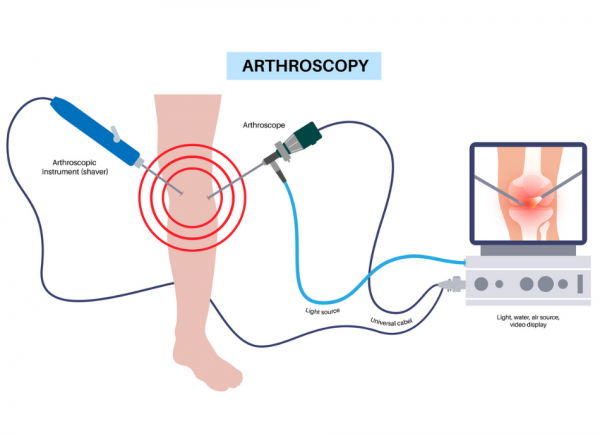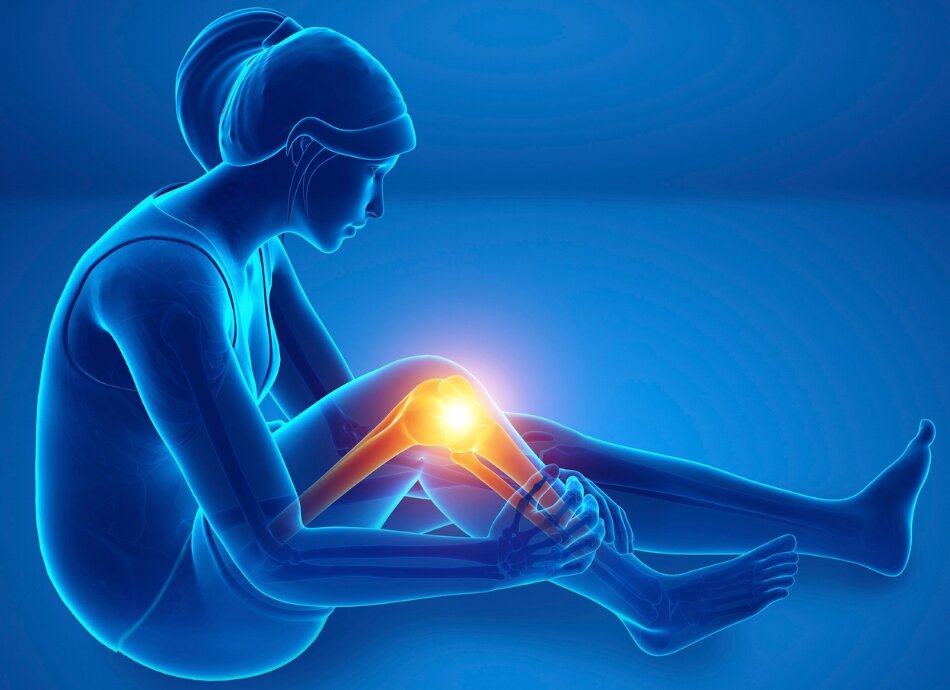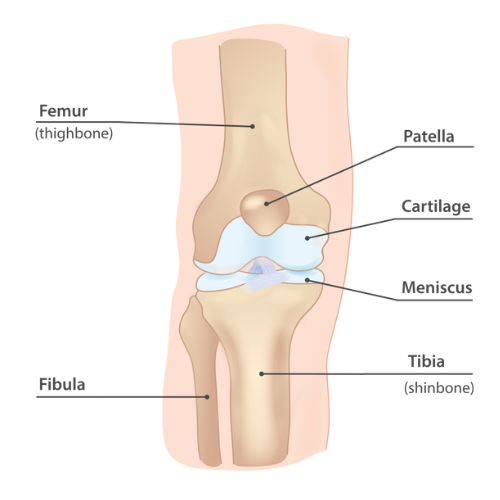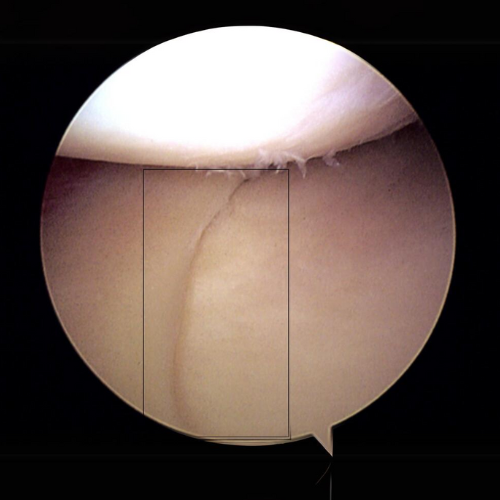A knee arthroscopy is an examination of the inside of the knee joint. It's done by inserting a specially designed camera and instruments through 2 small cuts (incisions).

Image credit: Depositphotos

Low or no data? Visit zero.govt.nz, scroll down the page then click on our logo to return to our site and browse for free.

A knee arthroscopy is an examination of the inside of the knee joint. It's done by inserting a specially designed camera and instruments through 2 small cuts (incisions).

Image credit: Depositphotos

Image credit: InjuryMap via Wikimedia Commons(external link)
A knee arthroscopy is done in a hospital. You will usually be able to go home on the same day. The surgery is usually done under a general anaesthetic, which means you'll be unconscious. Sometimes it can be done under a local anaesthetic, which means you're awake but your knee is numb.
Two cuts are made in your skin and the surgeon puts the arthroscope (the flexible camera and light) through one of these to find the problem. The arthroscope transmits pictures to a screen, which the surgeon uses to guide and manipulate the instruments. Liquid may be put through one of the cuts to allow a better view.
The surgeon may use fine instruments to repair or remove any damage. Then the instruments are removed and the cuts are stitched if necessary.
The arthroscope image below shows the inside of a knee, with a tear of the meniscus shown inside the black rectangle.

Image credit: Tim1965 via Wikimedia Commons(external link)
The procedure is done without any problems most of the time. Complications are rare but can include:
As with any operation, there is a risk of allergy to local anaesthetics, or complications of anaesthesia if a general anaesthetic is used.
For at least 24 hours after a general anaesthetic you shouldn't:
Following the operation you may have tiredness or mild nausea because of the anaesthetic. This may last a day or two.
Pain usually improves within the first week. Pain relief medicines should be taken regularly to begin with – your surgeon will give you instructions about this. Keep your leg up with a pillow under your foot and apply ice packs 3 to 4 times per day for up to 20 minutes.
You should be able to walk the same day as your surgery usually without needing crutches. Rest your leg as much as possible for 2 to 5 days following the procedure.
Walk a little but no more than you need to for the first week. After this you can gradually increase your walking distance as comfort allows. Avoid running, jumping and impact exercises for 6 weeks.
Exercises
After a knee arthroscopy, swelling is normal for the first 6 to 8 weeks.
You'll be able to drive when you're no longer taking strong pain relief medicines (eg, tramadol or codeine) and when you're safe to use the brake pedal in an emergency. This is usually after 1 to 2 weeks.
You can return to work when you're comfortable. For sedentary work where you are sitting most of the time this is usually after 5 to 7 days. For physical jobs that require lots of standing, walking and/or lifting this may be up to 3 weeks. Then you should be able to return to light duties with a return to full duties after 6 weeks. Your healthcare team can advise you based on the type of work you do.
You should contact your surgeon/orthopaedic nurse if:
Arthroscopy and arthroscopic surgery(external link) Patient.info, UK, 2016
Credits: Information on arthroscopy and arthroscopic surgery provided by Boulcott Hospital and Specialist Centre, NZ
Reviewed by: Dr Emma Dunning, Clinical Editor and Advisor
Last reviewed: